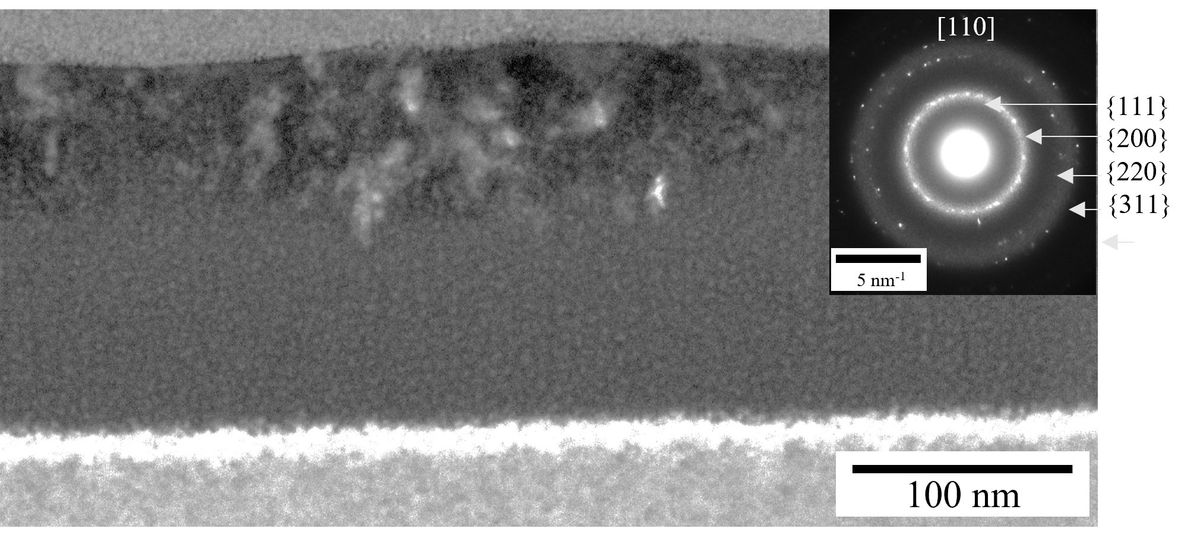Some of the most promising quantum computers have to date involved exotic materials and systems—including superconducting materials cooled to near-absolute zero and floating ions and atoms held in electric fields and laser traps. Yet familiar old silicon would be decidedly more scalable and convenient if only there were reliable ways to build qubits and quantum circuits as readily as conventional transistors and logic gates.
A new form of silicon called Q-silicon could be just the ticket, its developers say. Researchers at North Carolina State University who reported the material in the journal Materials Research Letters say it has properties suitable not just for quantum computing but also for lithium-ion batteries.
“To fool Mother Nature you have to overcome thermodynamic constraints, so you have to do this very, very fast.”
—Jay Narayan, North Carolina State University
Silicon usually comes in three forms: crystalline, in which atoms have a well-ordered structure; amorphous, where atoms are randomly situated; and polycrystalline, where smaller crystalline units are connected randomly. In the crystalline type, silicon atoms are packed just like carbon atoms in diamond, with four atoms forming the corners of a pyramid.
Q-silicon has a random arrangement of those diamondlike pyramids that results in more densely packed atoms and less free space. Jay Narayan, a professor of materials science and engineering at NCSU and his colleagues created Q-silicon by blasting amorphous silicon with nanosecond-long pulses of a high-power laser, and then cooling it in one-fifth of a microsecond.
That’s fast enough that conventional thermodynamics do not take over to rearrange the atoms back into one of silicon’s three naturally occurring forms. “To fool Mother Nature you have to overcome thermodynamic constraints, so you have to do this very, very fast,” Narayan says.
How can Q-silicon be used for qubits or batteries?
Q-silicon, the researchers show, reveals properties unseen in regular silicon. For one, it is ferromagnetic at room temperature. Ferromagnetism, the property by which materials become magnetized when placed in an external magnetic field and then hold that magnetized state afterward. Ferromagnetism is usually found in metals like iron and nickel and arises from bulk properties of the atoms in a solid. Their magnetic dipoles can be aligned by external fields and then hold their place once those fields disappear. But if individual electrons in those materials can be isolated, those electrons’ spins—which can themselves be up or down or intermediate quantum combinations of the two—could also be used as a qubit, as a means of encoding quantum information.
The even number of electrons in carbon and silicon typically means that their charges all exist in pairs with opposite spins, which cancel each other’s magnetic fields. So retaining and manipulating individual electron spins in silicon has typically not been an option for engineers and material scientists. Ferromagnetism requires single electrons, or unpaired spins, Narayan says. However, “with the rapid melting and cooling we are able to create unpaired spins that are ferromagnetic,” he says. “The idea is that if silicon can have unpaired spin, then you can store information in that spin.”
Harnessing spin is challenging, and people have tried reading the spin states of phosphorus atoms implanted in silicon as a path to quantum computers. Narayan says that Q-silicon could make it simpler to take advantage of spin in silicon atoms. “You can create quantum computers and all kinds of other interesting applications now,” he says, “because Q-silicon is ferromagnetic at room temperature.”
Moreover, when doped with boron atoms, the researchers report that Q-silicon becomes superconducting. Known superconductors typically display their superconducting powers only at very low temperatures, hence the skepticism that faces any reports of room-temperature superconductors.
The highest-temperature superconductors at ambient pressure known to date become superconducting below 130 kelvins. Narayan and his colleagues say the boron-doped Q-silicon transitions to superconducting at 174 K.
The researchers plan to demonstrate Q-silicon-based quantum computers in the near future, says Narayan. But they’re also looking to develop the material’s potential for battery applications. “We are going to create high-power and high-efficiency lithium- and sodium-ion batteries,” he says.
To use Q-silicon for batteries, Narayan says they’ll combine Q-silicon with another related material, called Q-carbon, that they discovered in 2015. Both materials, the researchers say, take on more lithium ions than the graphite-based anodes used in today’s batteries. Graphite, he says, has a current-storing capacity of 200 milliamperes per gram. By contrast, he says, Q-carbon has a capacity of 500 mA/g. Meanwhile, he says, Q-silicon boasts 1,000 mA/g. “Combine them together and they make the best anode for lithium-ion batteries,” he claims.
The researchers have teamed up with German company Koening Systems to launch a startup called Q-Power Batteries.
- Flip-Flop Qubit Could Make Silicon the King of Quantum Computing ›
- What Intel Is Planning for The Future of Quantum Computing: Hot Qubits, Cold Control Chips, and Rapid Testing ›
- Purified Silicon Makes Bigger, Faster Quantum Computers - IEEE Spectrum ›
Prachi Patel is a freelance journalist based in Pittsburgh. She writes about energy, biotechnology, materials science, nanotechnology, and computing.



